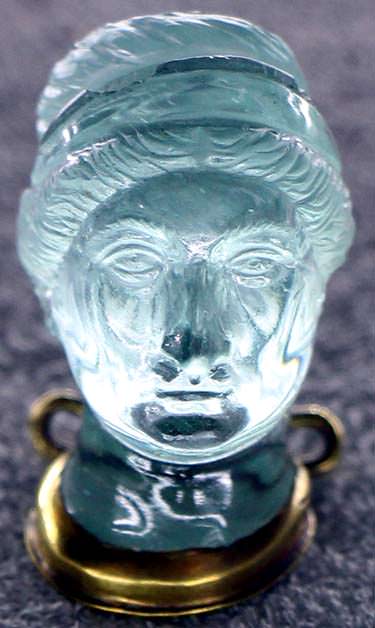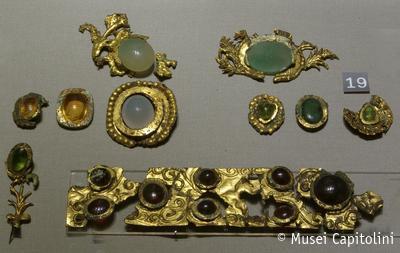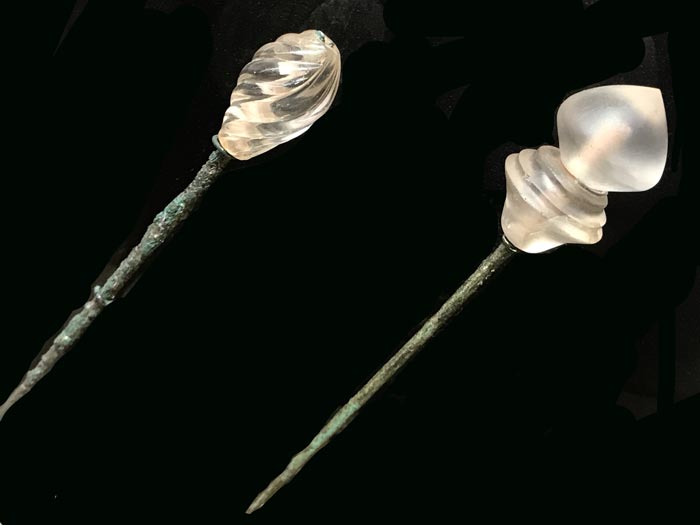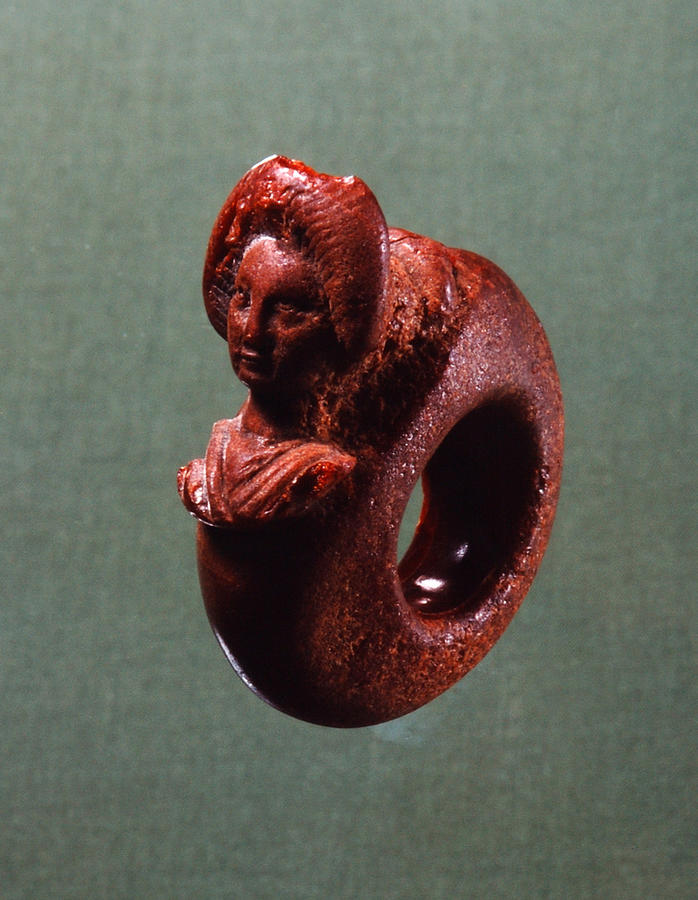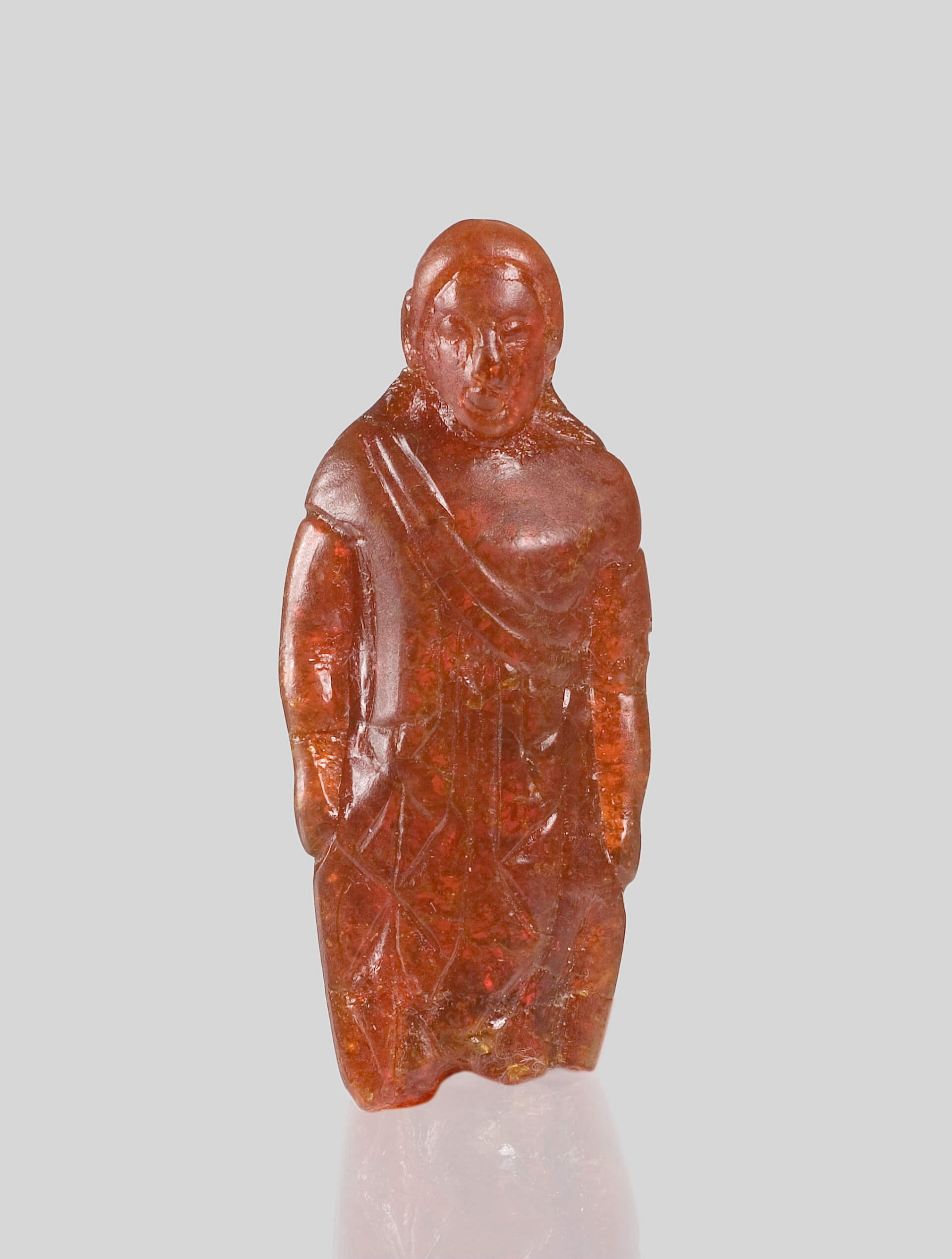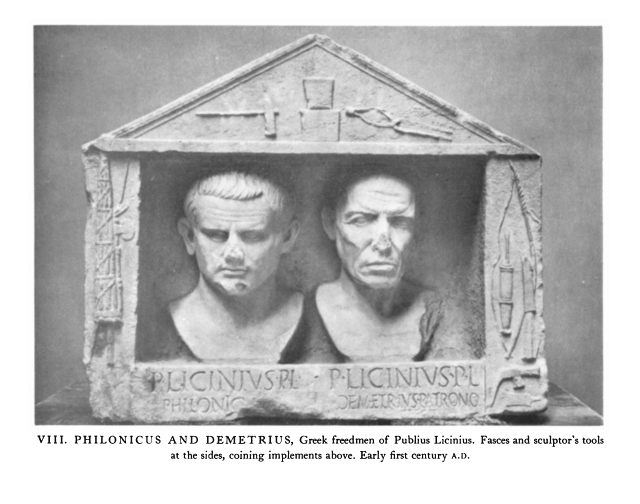Romans loved emeralds, and there is a lot of this gemstone used in jewelry, but the emerald, due to its hardness, was difficult to carve. A very similar looking is green (chromian) chalcedony or jasper, called interchangeably and incorrectly by historians and archaeologists “emerald plasma”, “plasma” or “prase”1.
 |  |
“Gems of Heaven” pp 12
G. Platz-Horster, “Kleine Praser…”
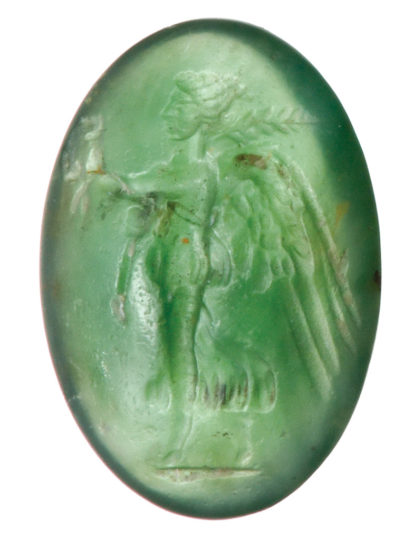 Intaglio with an image of the goddess Victory 2nd–3rd century; green chalcedony Museum of Applied Art, Serbia, Inv. No. 4751 | 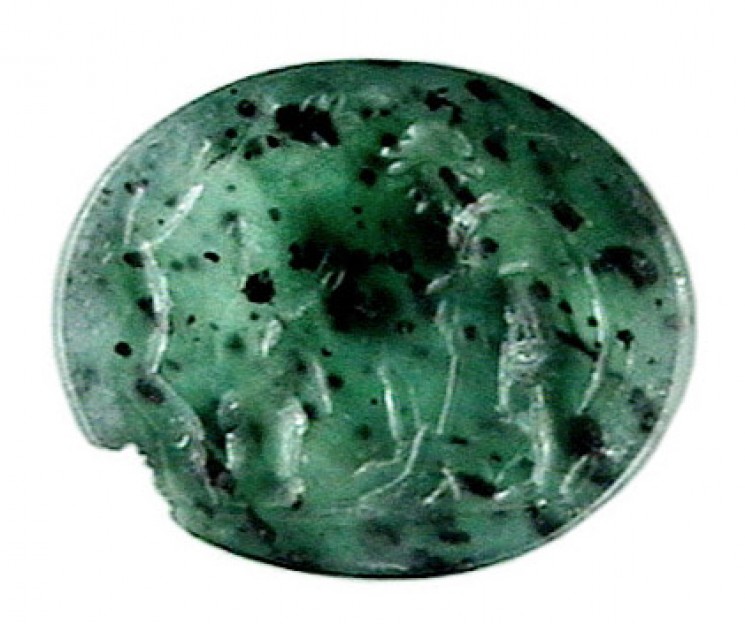 Greek chalcedony intaglio from Museum of Bologna; 1st C BCE “This is an example of green chalcedony (‘plasma’), where the scene of Oedipus’ discovery is represented. Oedipus was abandoned in the Citeron mountain by his father, Laio, according to a prophecy. The man on the right support himself with stick and is wearing a cloack on his shoulder and a hat on his head. A dog in above his feet, in front of it, seating on a rock, a little boy. The tree on the background suggest a countryside space.” |
Especially interesting are carvings in the form of little bust in high relief. The most known is the ring with a bust of Minerva carved of chrome chalcedony, dated 1st century, Roman, from the Getty Museum

Less know but not less interesting is the 1st-2nd century Roman ring from V&A Museum with a bezel in the form of a horned child’s head. The head is set in a restored gold hoop, but the most likely the entire ring was originally carved from “plasma”.
 |  |


“A ROMAN CHROME CHALCEDONY ENTHRONED MALE
CIRCA LATE 1ST-2ND CENTURY A.D.
Depicting either the god Mars or an emperor, seated with both legs drawn back, armed in a metal cuirass over a leather garment and tunic, with two tiers of straps protecting his shoulders and long straps at his hips, the shoulder straps with tasseled ends, the cuirass with naturalistically-modelled musculature and patterned shoulder straps, secured with a cingulum below the breasts, the ends curving out below, the collar with a band of ovolo, wearing a paludamentum over his legs, behind his back and over the left shoulder, his right arm originally lowered with the now-missing hand perhaps positioned on his thigh, his left arm extended out and likely bent up to hold a spear or a scepter, its shaft, circular in section, preserved behind the projecting molding of the left front throne leg, the throne with a tall rectangular back, its details carefully rendered, including recessed panels framed by moldings and patterned with circular recessions
10.4 cm high”
Provenance:
Private Collection, Switzerland.
with Phoenix Ancient Art, Geneva, 1990.
Private Collection, Switzerland, 2007.
Mentioned in:
J.M. Padgett, “A Chalcedony Statuette of Herakles,” in Record of the Art Museum Princeton University, vol. 54, no. 1, 1995, pp. 7-9, fig. 7. https://www.jstor.org/stable/3774714
E. Gagetti, Preziose Sculture di et Ellenistica e Romana, Milan, 2006, p. 225, fig. A45 and A46. academia.edu
G. Platz-Horster, “Kleine Praser and Chromium-bearing Chalcedonies: About a small group of engraved gems,” in PALLAS, vol. 83, 2010, pp. 179-202 https://journals.openedition.org/pallas/10993
Sources:
1 Kleine Praser and Chromium-bearing Chalcedonies. About a small group of engraved gems Gertrud Platz-Horster
ENGRAVED GEMS: A HISTORICAL PERSPECTIVE By Fred L. Gray






